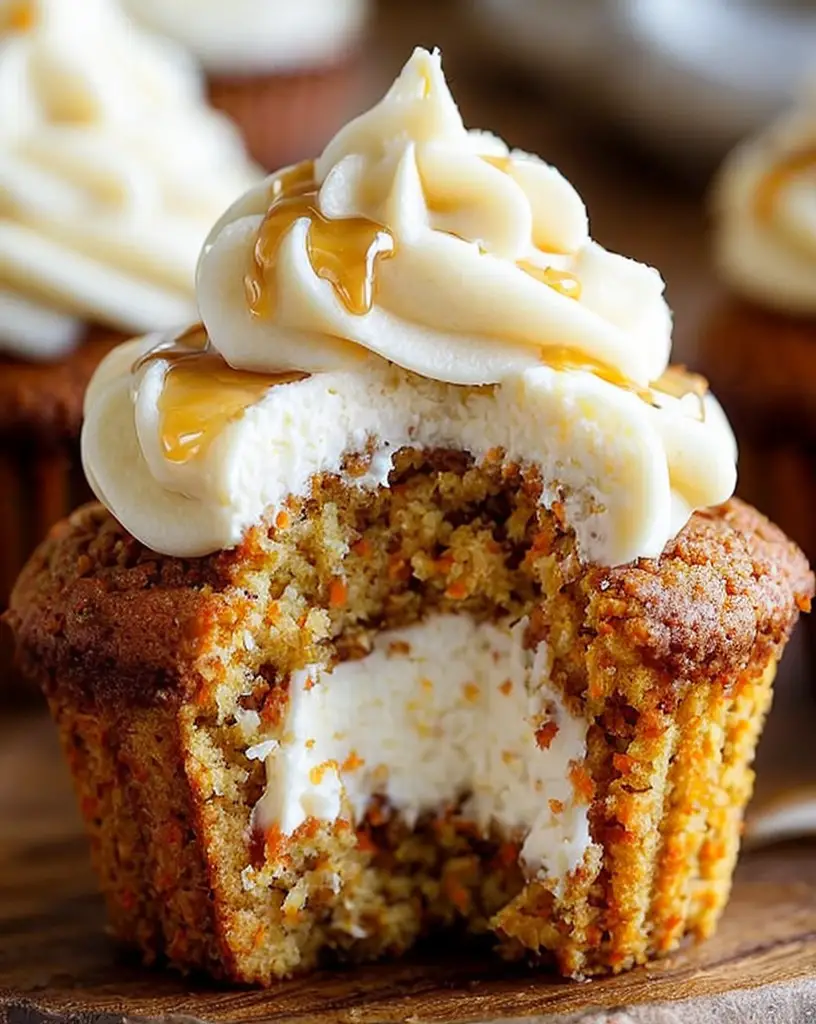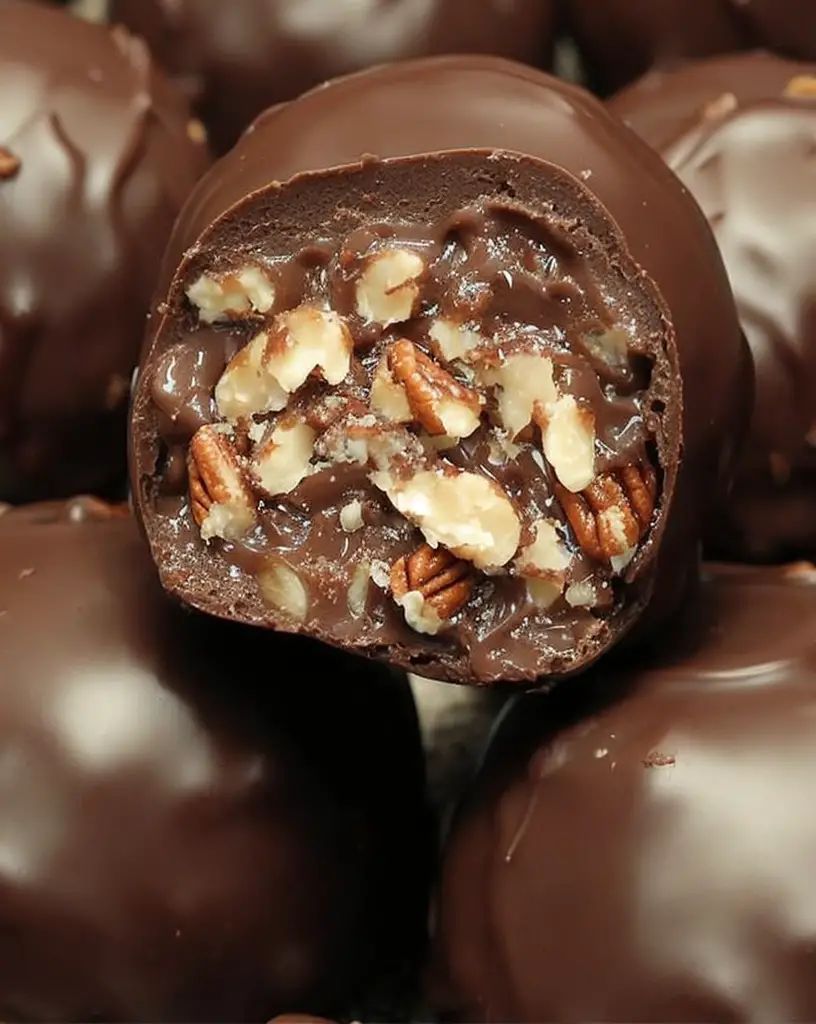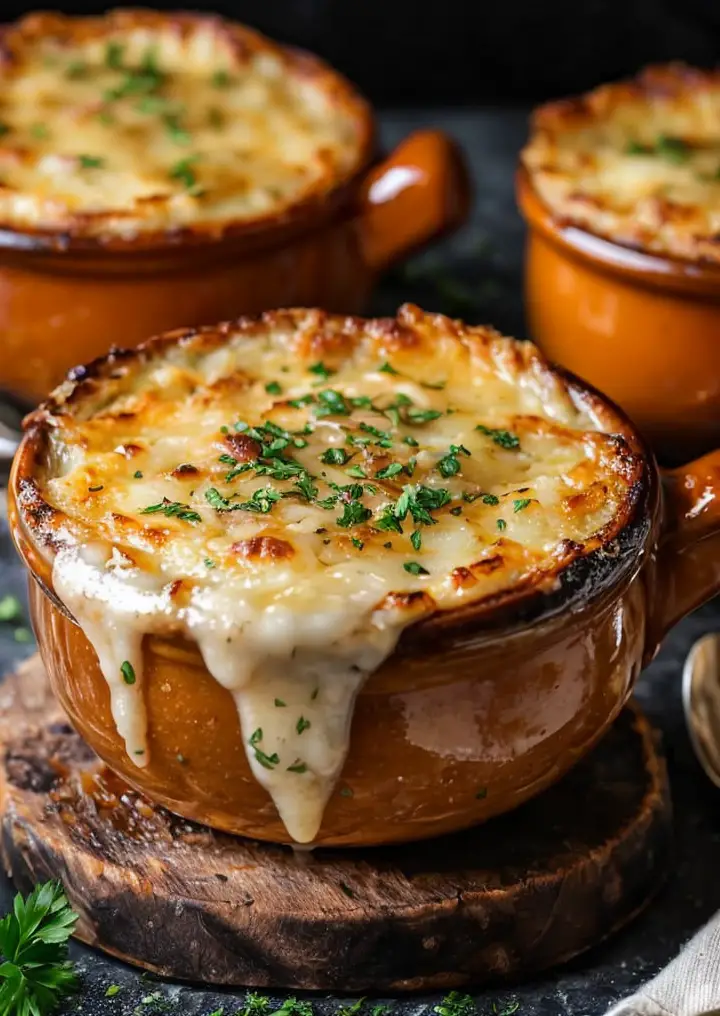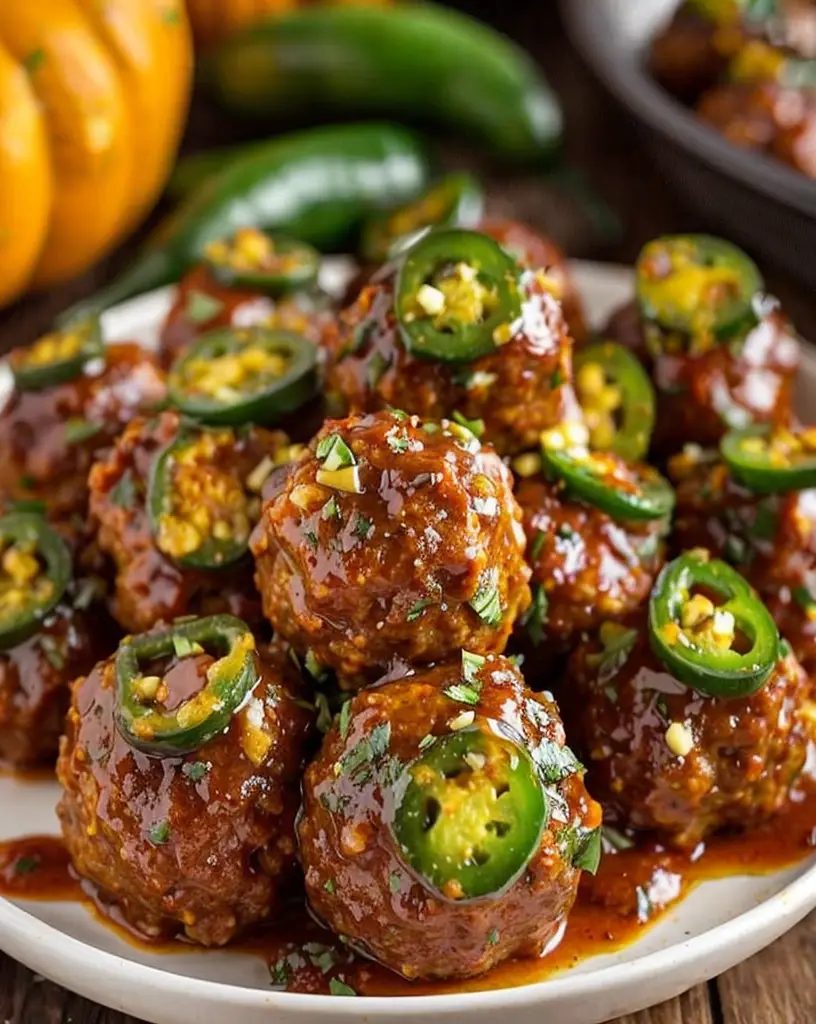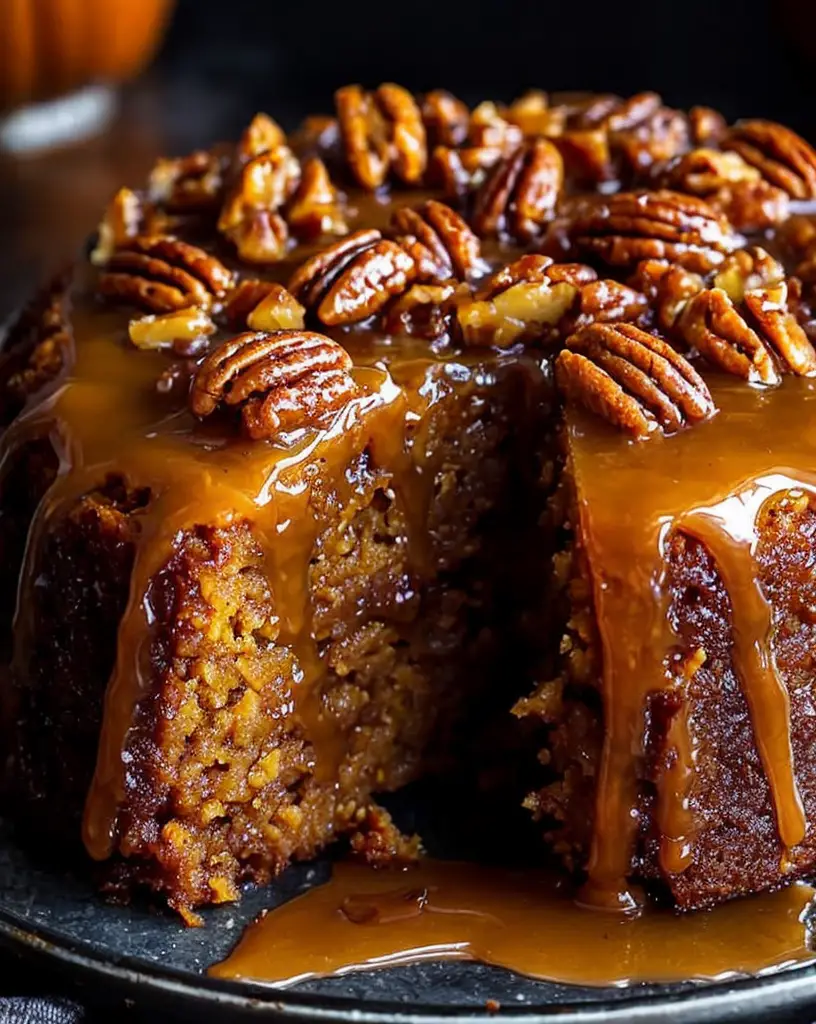Luscious Carrot Cake Cheesecake Cupcakes: Indulge in a Flavorful Delight
Are you ready to take your dessert game to the next level with these Luscious Carrot Cake Cheesecake Cupcakes? This delightful recipe combines the wonderful flavors of traditional carrot cake with the creamy richness of cheesecake, encapsulated in a beautifully baked cupcake. Each bite is a perfect balance of sweetness and spice, evoking feelings of warmth and comfort. Whether you’re baking for a special occasion or just because, these cupcakes are guaranteed to impress your family and friends.
Imagine the sweet aroma of freshly grated carrots mingling with hints of cinnamon and vanilla as these cupcakes bake in the oven. Topped with a luscious cream cheese frosting, they not only look stunning but also taste heavenly. This is more than just a dessert; it’s an experience that will leave everyone wanting more. The combination of textures—from the fluffy cake to the smooth cheesecake filling—makes every mouthful a treat.
Quick Recipe Highlights
- Flavor Profile: These cupcakes are bursting with sweet carrots, warm spices, and a creamy cheesecake center.
- Texture: Expect a moist and fluffy texture from the carrot cake, paired with the smoothness of the cheesecake.
- Aroma: The baking process releases a delightful mix of cinnamon, nutmeg, and fresh carrots.
- Visual Appeal: Each cupcake showcases a beautiful swirl of cream cheese frosting, topped with shredded carrots and nuts.
- Skill Level Needed: This medium-level recipe requires basic baking skills and some patience.
- Special Equipment: You’ll need a cupcake pan and muffin liners, plus a mixer for the cheesecake filling.
Recipe Overview
- Difficulty Level: The process of creating these cupcakes is more involved than a standard recipe, but it’s accessible for intermediate bakers. With careful attention to detail, you can produce bakery-quality desserts.
- Category: Perfect for dessert, snack time, or even a celebratory treat, these cupcakes fit well in numerous meal categories.
- Cuisine: Rooted in traditional American baking, these cupcakes draw inspiration from classic carrot cake recipes that have delighted taste buds for generations.
- Cost: Depending on ingredient availability, these cupcakes can be made on a budget, generally totaling about $15 for a dozen.
- Season: While delicious all year round, they’re especially perfect during spring and autumn when carrots are fresh and in season.
- Occasion: Ideal for birthdays, holidays, or simply as an afternoon snack, these cupcakes elevate any gathering.
Why You’ll Love This Recipe
The taste and texture appeal of these Luscious Carrot Cake Cheesecake Cupcakes is undeniable. The spices in the carrot cake harmoniously complement the tanginess of the cream cheese filling, creating layers of flavor that dance on your palate. The use of freshly grated carrots not only contributes to the sweetness but also adds moisture, ensuring each bite is soft and enjoyable.
Convenience and preparation benefits make this recipe a favorite. Unlike traditional layered cakes, these cupcakes donate a perfect portion control solution while still retaining that special touch of homemade love. You can easily prepare the batter and filling in advance, then bake right before serving for maximum freshness.
Nutritionally, carrots provide a good dose of vitamins and minerals, making these cupcakes a slightly healthier indulgence compared to other desserts. The addition of spices like cinnamon and nutmeg not only enhances flavor but also offers antioxidant benefits.
Social and entertaining value is another reason to adore these cupcakes. They’re a fantastic conversation starter, bringing friends together over their delightful taste while looking appealing on any dessert table. Plus, their individual servings make them easy to share among guests.
Cost-effectiveness and accessibility of ingredients ensure that anyone can whip up these Luscious Carrot Cake Cheesecake Cupcakes. The recipe calls for pantry staples, and fresh carrots are available in most grocery stores, making it a budget-friendly option for anyone looking to impress.
Historical Background and Cultural Significance
The origin story of carrot cake can be traced back to medieval times when carrots were used as a sweetener during wartime when sugar was scarce. Over time, the use of carrots in desserts evolved, leading to the creation of the beloved carrot cake recipes we have today.
Culturally, carrot cake has become a staple in American kitchens, especially in the South. It’s often served at celebrations and holidays, symbolizing togetherness and joy. The combination of spices and cream cheese frosting has made it a popular choice among dessert lovers.
The evolution of this recipe is fascinating. What started as a simple cake has transformed into myriad variations, including cakes, cookies, and, more recently, cupcakes. Each iteration adds a unique twist to the classic flavor profile.
Regional variations exist as well, with different areas putting their spin on ingredients. For instance, some bakers add pineapple or coconut, enhancing the moisture and tropical flavors of carrot cake, further showcasing its adaptable nature.
Ingredient Deep Dive
Carrots are the star ingredient in this recipe, often lauded for both their sweetness and nutritional benefits. Historically, carrots have been cultivated since ancient times for culinary and medicinal purposes. Rich in vitamins A and K, they’re fantastic for eye health and overall wellness.
When selecting carrots, look for firm, smooth skin without blemishes. For storage, keep them in the fridge to prolong freshness, and they can be grated in advance for convenience. If you’re out of carrots, zucchini can be an excellent substitute, as it also provides moisture and a mild flavor.
Next in line is the cream cheese used for the frosting. This essential ingredient brings a rich, tangy flavor and smooth consistency that pairs perfectly with the sweetness of the carrot cake. Cream cheese has its origins in the early 19th century and has since become a staple in desserts across cultures.
When selecting cream cheese, opt for full-fat versions for the richest flavor and texture. It should be stored in the refrigerator and brought to room temperature before frosting for the best consistency. If you’re looking for alternatives, mascarpone or ricotta can work in a pinch, though they will change the flavor profile.
Common Mistakes to Avoid
- Not measuring ingredients accurately can lead to undesirable textures. Always use a kitchen scale for the best results.
- Overmixing the batter is a common mistake that can cause dense cupcakes. Mix until just combined for light and fluffy results.
- Using cold eggs and cream cheese can affect the smoothness of your batter. Ensure all ingredients are at room temperature.
- Neglecting to grease the cupcake liners properly could result in cupcakes sticking. Use non-stick spray for extra assurance.
- Underbaking or overbaking cupcakes affects the final outcome. Use a toothpick to check for doneness; it should come out clean when inserted.
- Forgetting to shred the carrots finely can lead to uneven texture. Use a fine grater for the best distribution.
- Being too generous with the frosting can overwhelm the cupcakes. Apply a thin, even layer for a balanced flavor.
- Skipping the refrigeration step for cream cheese frosting can make it difficult to work with. Chill for 30 minutes to achieve the perfect spreadability.
- Not allowing the cupcakes to cool before frosting can result in melted frosting. Ensure they are fully cool for the best results.
- Ignoring the importance of flavor balance can lead to overly sweet cupcakes. Taste and adjust spices accordingly.
Essential Techniques
Mixing the batter correctly is essential for creating light cupcakes. Use the creaming method for the butter and sugar to incorporate air, and combine dry ingredients separately to avoid clumping. Common pitfalls include overmixing, which can lead to dense cupcakes; aim for just combined.
Properly cooling the cupcakes before frosting is critical. Allow them to sit in the pan for 5 minutes before transferring to a wire rack. This ensures they’re set properly and avoids melting your cream cheese frosting when applied. Visual cues for success include a lightly golden top and a firm touch.
Pro Tips for Perfect Luscious Carrot Cake Cheesecake Cupcakes
1. Always use fresh spices for maximum flavor impact; swap out old cinnamon and nutmeg for fresh ground alternatives.
2. To enhance the carrot flavor, add a splash of orange or lemon zest to your batter.
3. Consider adding crushed pineapple for moisture and a delightful flavor twist.
4. Experiment with different nut toppings, such as pecans or walnuts, for added crunch and taste.
5. For decorating, use a piping bag for a professional finish, and top with edible flowers for a pop of color.
6. If you love a surprise, add mini chocolate chips to the cupcake batter for a delightful contrast to the carrot.
7. Store leftover cupcakes in an airtight container to retain freshness.
8. Share your baking achievements on social media to inspire others!
Variations and Adaptations
Regional variations of carrot cake showcase local flavors; for instance, adding coconut or raisins is popular in Caribbean-inspired recipes. Seasonal adaptations might involve swapping fall spices with brighter citrus notes in the spring, creating a lighter taste profile.
For dietary modifications, consider using gluten-free flour blends for those with gluten sensitivities. Vegan adaptations can be achieved by substituting eggs with flaxseed meal and using dairy-free cream cheese. Additionally, for flavor variations, introduce spices like ginger or allspice to add depth.
Serving and Presentation Guide
Plating techniques can elevate your cupcake presentation. Consider tiered stands for a striking display, utilizing varying heights and colors to draw attention. Simple garnishing ideas include sprinkling chopped hazelnuts or a drizzle of caramel sauce.
Traditional accompaniments like a scoop of vanilla ice cream create a delightful contrast to the carrot cake. Modern serving suggestions include pairing with a herbal tea or spiced chai for an indulgent afternoon treat.
Temperature considerations matter! Serve these cupcakes slightly chilled to showcase the creamy frosting. Portion control is easier with standard cupcake liners, but avoid too generous servings to let guests enjoy a variety of desserts.
Wine and Beverage Pairing
Wine pairings with these Luscious Carrot Cake Cheesecake Cupcakes can be delightful; consider a light Riesling or Moscato, which pair beautifully with the sweetness of the carrot cake and cream cheese frosting. For those who prefer non-alcoholic alternatives, a ginger lemonade works wonderfully to balance the flavors.
If you enjoy coffee or tea with dessert, a strong cup of Earl Grey highlights the spices of the cupcake, creating a comforting combination. Serve at optimal warmth, allowing the flavors to shine through.
Storage and Shelf Life
Proper storage methods ensure the longevity of your cupcakes. Keep them in an airtight container in the refrigerator for up to a week. This helps the cream cheese frosting maintain its texture while preserving the moisture of the cupcakes.
Temperature requirements for storage include cooler environments to prevent spoilage. Suitable containers include glass or plastic with tight-sealing lids, ensuring freshness. Signs of spoilage might include an unpleasant odor or a dry texture, signaling it’s time to discard them.
If you want to enjoy them later, freezing is an option. Wrap individual cupcakes in plastic wrap and aluminum foil, then store them in a freezer-safe bag for up to three months.
Make Ahead Strategies
Prep timeline is key; you can make the batter and cheesecake filling in advance, storing them separately in the refrigerator. This allows for easy assembly when you’re ready to bake. Quality impact assessment shows that making them a day later improves flavor as they set.
Assembly tips include baking the cupcakes and frosting just before serving for optimal freshness. If you want to add fresh elements, consider garnishing with herbs or citrus zest right before serving to keep colors vibrant.
Scaling Instructions
When halving the recipe, adjust each ingredient proportionately to maintain flavor balance. For doubling or tripling, prepare for longer baking times, and consider using multiple cupcake pans to streamline the process.
Equipment adjustments may be needed for larger batches, ensuring your kitchen tools can handle increased quantity. Timing modifications are crucial for cooking; check for doneness regularly when scaling up.
Nutritional Deep Dive
The macro breakdown of these Luscious Carrot Cake Cheesecake Cupcakes includes carbohydrates from flour and sugar and protein from eggs and cream cheese. Understanding these macros helps in balancing indulgence within a meal plan.
Micronutrient analysis reveals the benefits of carrots, which are rich in vitamin A, promoting good vision and skin health while providing fiber. Dietary considerations are important for maintaining a balanced diet; enjoy these cupcakes as an occasional treat rather than a daily indulgence.
Portion analysis indicates that moderation is key for weight management; planning to enjoy just one cupcake can allow you to satisfy sweet cravings without going overboard.
Dietary Adaptations
For a gluten-free version, replace flour with a gluten-free blend. Use certified gluten-free oats to maintain the integrity of the cake while ensuring it’s suitable for everyone.
For a dairy-free option, substitute cream cheese with cashew cheese or a dairy-free alternative. If you are looking for a vegan version, use plant-based buttermilk and egg replacements such as flax meal.
Troubleshooting Guide
Texture issues such as dry cupcakes can result from overbaking or too much flour. Ensure accurate measurements and check for doneness earlier than the suggested time.
For flavor balance, if your cupcakes taste too sweet, consider reducing sugar in the frosting, as the cake itself will also contribute sweetness. Additionally, bring the balance of spices to the forefront to avoid cloying flavors.
Recipe Success Stories
Community feedback has shown great enthusiasm for these cupcakes, with many praising the delightful blend of flavors. Readers have shared successful adaptations, such as incorporating unique spices and additional fruits, creating their own signature version.
Photography tips include capturing the vibrant colors of the carrot and the creamy frosting, highlighting their appeal on social media. Recipe variations have encouraged a lively discussion amongst bakers, expanding the community around this delightful treat.
Frequently Asked Questions
Can I freeze these cupcakes?
Yes! You can freeze the cupcakes for up to three months. Wrap them individually to maintain freshness.
What can I substitute for cream cheese?
If you’re looking for a substitute, mascarpone or ricotta cheese can be used, but they will alter the flavor slightly.
Is this recipe suitable for kids?
Absolutely! These cupcakes are a hit with kids due to their tasty nature and fun presentation.
Can I add nuts to the batter?
Yes, adding chopped walnuts or pecans provides additional crunch and flavor. Just be sure to chop them finely.
What spices are traditionally used in carrot cake?
The most common spices are cinnamon, nutmeg, and ginger, which complement the sweetness of the carrots perfectly.
How do I know when my cupcakes are done?
Check for doneness by inserting a toothpick in the center; it should come out clean or with a few moist crumbs attached.
Can I make mini versions of these cupcakes?
Yes! Just reduce the baking time and watch closely as they will bake faster.
What goes well as a garnish on these cupcakes?
Shredded carrots, edible flowers, or a sprinkle of crushed nuts make beautiful garnishes!
How do I store leftover cupcakes?
Keep them in an airtight container in the fridge to maintain freshness for about a week.
What is the best way to serve these cupcakes?
Serve them chilled or at room temperature, adorned with a dollop of frosting for presentation.
Additional Resources
Explore related recipes, including classic carrot cake, and cream cheese frosting to enhance your baking repertoire. Technique guides on making perfect cupcakes or cream cheese frosting offer deeper understanding and skills.
Ingredient information about the benefits of using fresh spices and quality carrots will empower your future baking adventures. For equipment recommendations, look for quality cupcake pans and mixers that stand the test of time. Seasonal variations can inspire new twists on this classic recipe throughout the year.
Join the Conversation
Share your baking creations on social media using the recipe hashtag! Join our community and engage with fellow bakers. Offer feedback and photography tips to inspire others and encourage recipe reviews to enhance our baking community.
The Recipe
Luscious Carrot Cake Cheesecake Cupcakes
Serves: 12 cupcakes
Prep Time: 20 mins
Cook Time: 25 mins
Total Time: 45 mins
Kitchen Equipment Needed
- Cupcake pan
- Mixing bowls
- Hand mixer or stand mixer
- Measuring cups and spoons
- Piping bag (for frosting)
Ingredients
- 1 1/2 cups all-purpose flour
- 1 teaspoon baking soda
- 1 teaspoon baking powder
- 1 teaspoon cinnamon
- 1/2 teaspoon nutmeg
- 1/4 teaspoon salt
- 1/2 cup granulated sugar
- 1/2 cup brown sugar
- 1/2 cup vegetable oil
- 3 large eggs
- 1 teaspoon vanilla extract
- 1 1/2 cups grated carrots
- 8 oz cream cheese, softened
- 1/2 cup powdered sugar
- Additional frosting ingredients as desired
Directions
- Preheat your oven to 350°F (175°C) and line a cupcake pan with liners.
- In a bowl, mix flour, baking soda, baking powder, cinnamon, nutmeg, and salt.
- In another bowl, whisk the sugars, oil, eggs, and vanilla until smooth.
- Gradually add the dry ingredients to the wet ingredients, mixing just until combined.
- Fold in the grated carrots gently.
- Fill the cupcake liners about 3/4 full with cupcake batter.
- In a separate bowl, combine softened cream cheese and powdered sugar until smooth for the cheesecake filling.
- Place a dollop of cream cheese filling onto each cupcake batter before baking.
- Bake in preheated oven for 20-25 minutes, checking with a toothpick for doneness.
- Remove from oven and let cool in the pan for 5 minutes before transferring to a wire rack.
- Once cooled, frost with cream cheese frosting and serve.
Recipe Notes
- Feel free to add nuts or raisins to the batter for added flavor and crunch.
- Use leftover frosting as a dip for fruit or cookies!
- Experiment with different spices if you want to tweak the flavor profile.
